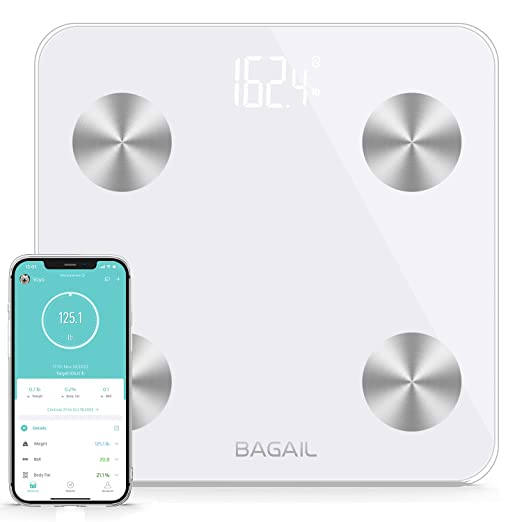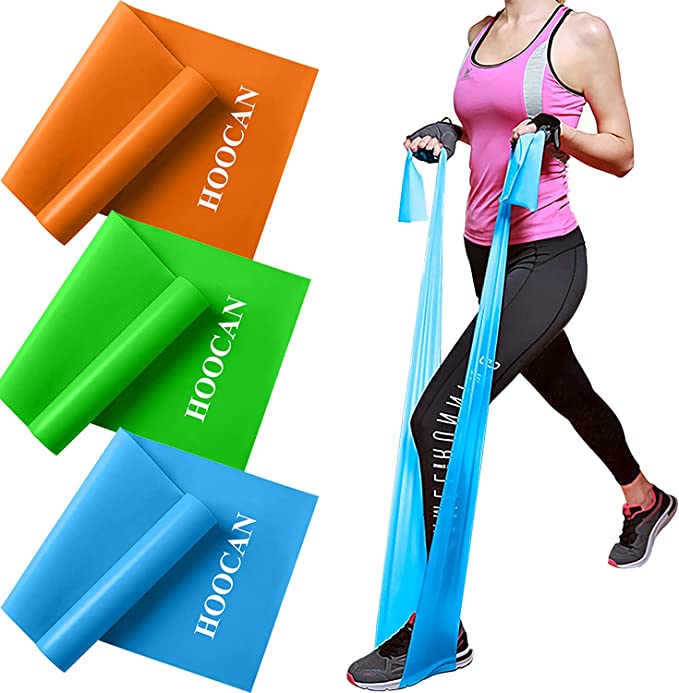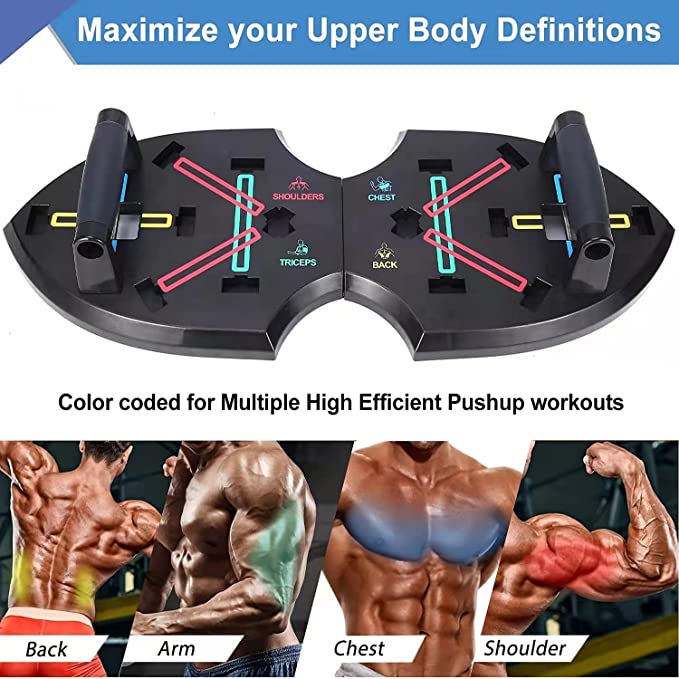Hypertension is one of the common conditions that the population faces. In truth, it’s estimated that just about half of all adults suffer from elevated blood pressure to various degrees.
This makes it a pressing health concern that should be taken seriously. After all, there’s the pharmaceutical route, but can exercise lower blood pressure? Yes.
This text will go over what variety of exercise lowers blood pressure and the way much it’s essential do.
What Is Blood Pressure?
Your heart is probably the most sophisticated pump on the planet. It’s composed of a series of chambers, valves, and blood vessels that work with the lungs to continually replenish oxygenated blood and send it to your muscles.
Here’s what the fundamental order of blood flow looks like.
- Body – Blood delivers oxygen to tissues and picks up carbon dioxide (now deoxygenated).
- Right Atrium – Receives deoxygenated blood from the body.
- Right Ventricle – Pumps deoxygenated blood to the lungs.
- Lungs – Blood picks up oxygen and eliminates carbon dioxide.
- Left Atrium – Receives oxygenated blood from the lungs.
- Left Ventricle – Pumps oxygenated blood to the body.
- Back to the Body – Blood delivers oxygen again and repeats.
And that is the straightforward version!
To make sure your muscles and organs get loads of oxygen and nutrients, it must deliver 5-6 liters of blood throughout over 60,000 miles of blood vessels! To do that, your heart beats 60-100 times every minute during times of rest!
Which means that your blood has to forcefully pump blood every heartbeat. When your oxygenated blood leaves your left ventricle, it’s pumped out into your arteries. The blood in your arteries presses on the partitions of your arteries creating pressure – that is blood pressure!
Systolic And Diastolic Blood Pressure
Have you ever ever wondered why your blood pressure has two numbers? It’d appear like this;
Why is that?
Your heartbeat occurs in a rhythmic pattern during which the center pumps blood out after which have to be refilled with blood. These two processes generate different amounts of pressure.
- Systolic pressure (the highest number): That is the pressure when your heart contracts and pumps blood out. It shows how much pressure your blood is exerting on artery partitions during a heartbeat.
- Diastolic pressure (the underside number): That is the pressure when your heart is at rest between beats. It reflects the pressure in your arteries when the center is filling with blood again.
As your systolic pressure is when your heart contracts, this number goes to be higher.
What’s Considered High Blood Pressure?
When reading your blood pressure, there will be quite a little bit of variance. Listed below are the 5 levels of blood pressure
- Low Blood Pressure: <90/<60
- Normal Blood Pressure: 120 / <80
- Elevated Blood Pressure: 121-129 / <80
- Hypertension Level 1: 130-139 / 80-89
- Hypertension Level 2: 140+ / 90+
To be diagnosed with hypertension, just one number have to be high.
Also, your blood pressure can fluctuate resulting from various circumstances so one reading does not imply you could have hypertension. Before you get concerned, you need to measure high on at the very least 3 different times on different days.
While you measure your blood pressure, make certain you’re rested and in a peaceful state; don’t measure after exercise or after you sit in traffic for an hour. After sitting, wait at the very least 5 minutes before taking your measurement.
What Causes High Blood Pressure?
Your heart and cardiovascular system is a really complex system. As such, there are many variables that may cause elevated blood pressure. We will break these down into two foremost subcategories: ¹
1. Lifestyle Aspects. Lifestyle aspects are those which might be attributable to the way in which you reside your life. The advantage of these is that they’re modifiable by making different life decisions. You’ve got a whole lot of control over most of them, so you may easily mitigate your risk by eliminating harmful behaviors. These can include;
- Smoking
- Poor Weight loss plan
- Stress
- Smoking
- Drinking Alcohol
- Lack Of Physical Activity
2. Biological Aspects. Unlike lifestyle aspects, you could have little control over biological aspects. This can include;
- Age
- Genes
- Underlying Medical Conditions
As you may see, other than the biological aspects, lots of the causes of hypertension are attributable to ignoring generic advice given to live a healthy life.
Risks Of High Blood Pressure?
When not taken care of, hypertension may end up in serious consequences, including death.¹
- Heart Disease
- Stroke
- Peripheral Artery Disease (PAD)
- Aneurysm Formation
- Cognitive Decline & Dementia
- Vision Loss
- Kidney Damage
None of those are good and can have a major effect on your life.
And this is very important. Hypertension is a chronic condition. It is not going to cause immediate health concerns; this could cause some people to disregard it. Nonetheless, time beyond regulation, the additional pressure wears on the center and vessels – eventually you could have a serious problem.
It’s much like losing tread on a tire. It takes years to occur, and whilst you lose tread, you might not see any major effects. Nonetheless, impulsively, sooner or later, your tire blows.
Will Exercise Lower Blood Pressure?
Yes!
Above we went over the assorted aspects that increase your risk of developing hypertension. A significant risk factor are various modifiable lifestyle decisions with exercise playing a serious role.
Exercise can increase the strength of your heart and can be going to help improve your body composition by increasing your caloric burn – this assumes you furthermore mght watch your food plan, which you 100% should do!²
With that said, it is vital to grasp that exercise can affect your systolic blood pressure and diastolic blood pressure otherwise. This means certain sorts of exercises can affect systolic pressure and diastolic pressure otherwise, which we’ll discuss below.
Regardless, there are a ton of variables that may affect how blood pressure is modified with exercise. Nonetheless, when taking a look at all studies, exercises provides the next improvements on blood pressure;
- Systolic BP by 5–11 mmHg
- Diastolic BP by 3–7 mmHg
How Does Exercise Lower Blood Pressure?
There are many mechanisms by which regular exercise can lower your blood pressure. Depending in your specific situation, you might profit from one or all of those.
1. Reduces Arterial Stiffness – Exercise, especially aerobic activity, helps blood vessels change into more elastic. This increased flexibility ends in less resistance to blood flow and lower blood pressure.
2. Improves Endothelial Function – The endothelium is the inner lining of blood vessels and controls dilation. Exercise boosts nitric oxide production, which helps loosen up and open blood vessels, reducing pressure.
3. Strengthens the Heart (Lower Systolic) – A stronger heart pumps more blood with less effort. That means less force on the arteries, lowering systolic blood pressure.
4. Reduces Peripheral Resistance (Lower Diastolic) – With regular training, especially resistance exercise, your small arteries and capillaries change into higher at distributing blood. This reduces the baseline pressure in your vessels, especially diastolic BP.
5. Lowers Stress Hormones – This is related to lowering levels of stress. Exercise lowers the hormones cortisol and adrenaline, which might constrict blood vessels and lift BP. Regular movement may help calm the body leading to lower blood pressure.
6. Promotes Weight Loss and Fat Reduction – Less body fat ultimately decreases body weight and lowers the general strain on the circulatory system. It might also decrease the quantity of visceral fat, which is linked to hypertension and insulin resistance.
What’s The Best Exercise To Lower Blood Pressure?
When it involves lowering your blood pressure, the world’s your oyster! Mainly any sort of increased activity through exercise will be an efficient tool to lower your blood pressure.
1. Cardio Exercise. It appears that evidently the perfect exercise is prolonged endurance of cardio exercise, with most interventions seeming to consist of sessions of 30 min or greater. This consists of varied sorts of cardio, similar to jogging and brisk walking. For instance, some research found the next protocols effective;
- Swimming, dance
- Moderate intensity
- 50-60 minutes
- 2 times every week
Nonetheless, there does appear to be evidence that the perfect results are seen by utilizing the next guidelines on a consistent basis.³
- Jogging, cycling
- Medium-high intensity
- 40-60 minutes
- 3 times every week
The first takeaway is that including cardio is crucial. While there’s some variation in types and intensity, crucial factor is consistency.
2. Strength Training. While most individuals turn to cardio when speaking about lowering blood pressure, strength training has also been shown to be effective at lowering blood pressure.
Do not forget that your blood pressure is ultimately controlled by your cardiovascular system (heart, blood vessels, blood), and strength training places high demands on intermittently.
And here’s the excellent news: in terms of a particular variety of resistance training, there appear to be many decisions. A few of the methods shown to be effective at lowering your blood pressure include;
- Circuit training
- Body weight training
- Traditional resistance training (3X10 @ 75% 1RM)
- Isometric training
Now, some studies suggest that dynamic exercise may lower blood pressure to a smaller degree than aerobic endurance and even isometric training. Mouch of the isometric training consisted of contracting a muscle from 30-120s.
Mainly, any variety of external stimuli that places a greater demand in your heart could have a positive effect under one condition – it have to be consistent for a chronic duration!
3. Walking (Increased General Activity). Walking again! Increasingly research is coming out that shows the incredible health advantages from walking. Again, we’re differing this from cardio as we consider they do fall under different categories.
Regardless, if you happen to’re not walking, start. Research has found that walking an additional half-hour day by day, or 3km, can significantly reduce one’s blood pressure. And these effects will be huge.
Some research found that walking for half-hour 4 times every week combined with hand grip training lowered⁴
- Systolic blood pressure by 10 mmHg (127.8mmHg to 117.8mmHg)
- Diastolic blood pressure by 5.8 mmHg (94.1mmHg to 88.3 mmHg)
Walking is free, low-impact, and requires minimal skill, making it the proper tool for everyone to lower blood pressure.⁵

How To Use Exercise To Decrease Your Blood Pressure
Above, we went over various protocols for lowering blood pressure. It’s hard to provide a particular number for a way much exercise it’s essential do to lower blood pressure for several reasons;
- How high is your current blood pressure?
- What are your current activity levels?
- Increased activity lowers blood pressure on a continuum. Some is nice – More is healthier
To optimize your blood pressure, we might follow these guidelines;
- 2-3 strength training sessions weekly
- 3 cardio sessions of 30-60 minutes of moderate-high intensity
- Increase steps to at the very least 10,000 steps a day.
Decreasing your blood pressure doesn’t have to be complicated. On the very least, following a consistent walking program would do wonders for many individuals. As we went above, increasing your day by day steps at appropriate intensities may end up in significant decreases.
Plus, it’s 100% free!
So, if anything, everyone must be walking in the event that they want to diminish their blood pressure!
References






